Spiral wound manufacturing; the environmental choice for chemical storage
How we can reduce our impact on the planet and the energy we consume has been an increasing priority for many individuals and organisations. Chemical storage may not be the first area to come to mind when thinking about reducing your carbon footprint, but if you’re using aggressive and corrosive chemicals in your production processes choosing Spiral Wound Thermoplastic Chemical Storage Tanks will help minimise your environmental impact.
Since 1964, we’ve pioneered using Thermoplastics as the best materials for transferring and storing chemicals, but appreciate even the mention of “plastics” can ring alarm bells in any climate conversation. However, Thermoplastics do remain the best material to safely contain corrosive and aggressive chemicals, because of their broad range of compatibility.
Not only are Thermoplastics the best material for the job of chemical storage, but our Spiral Wound Chemical Storage Tanks have the lowest carbon footprint on the market when compared to other tank technologies and can be recycled at end of life, making them the best decision for the environment.
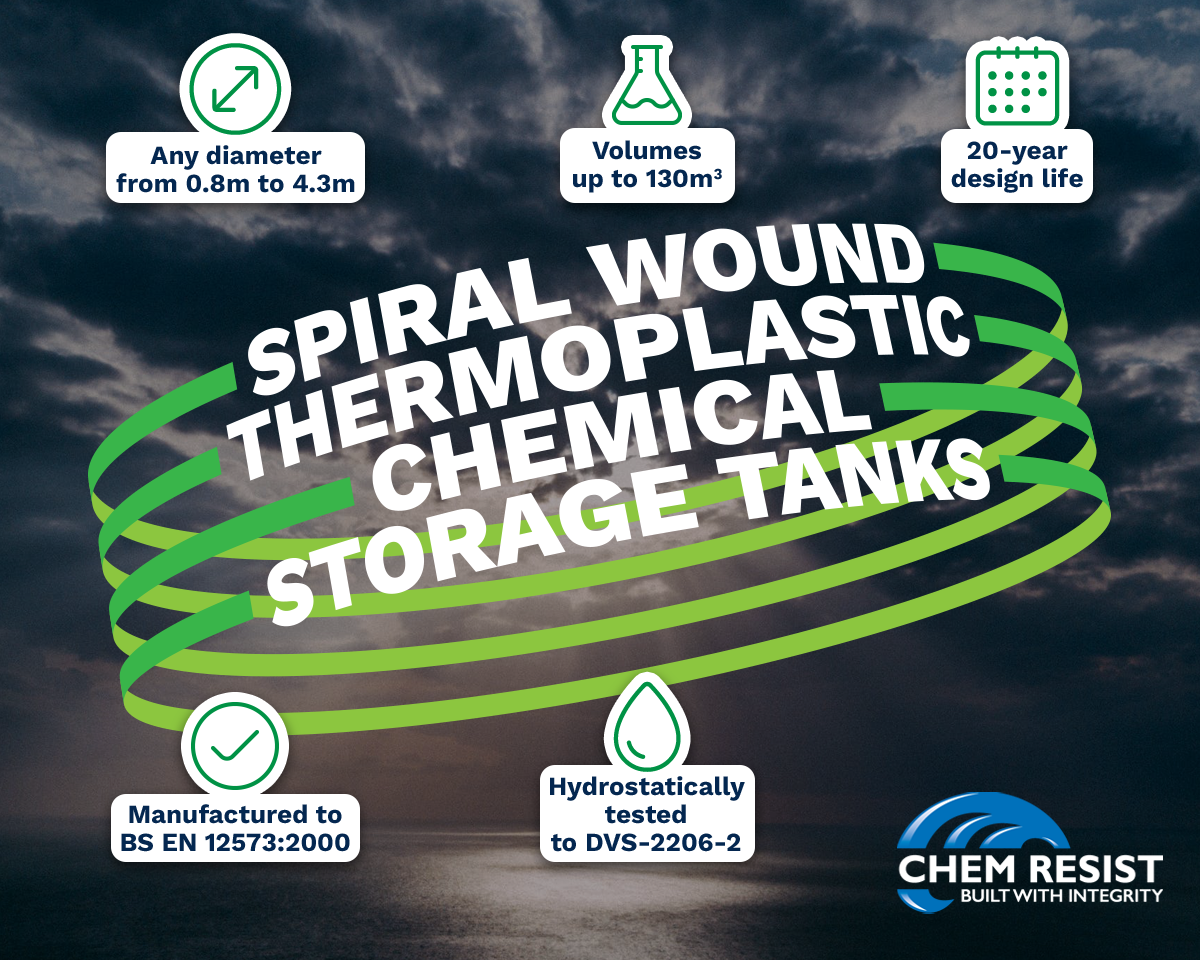
Not all plastics are a problem
The statistics don’t lie – plastic is a major problem. 448 million tons of plastic were manufactured in 2015, and this is on track to have doubled by 2050. Every year, 8 million tons of plastic waste escapes into the oceans. Our reliance on plastics for convenient, single-use, disposable items that go straight into landfill is a big part of the problem and significant work is being done to improve recycling facilities and also use alternative renewable materials.
There are some applications where plastic is not only the best material for the job, but it is a stand-out option that has a much lower impact on the environment in comparison to the alternatives. Applications involving aggressive and corrosive chemicals demand the best, and the numbers show that Spiral Wound Thermoplastic Tanks are also the best option for the environment.
How is spiral wound plastic manufacturing different?
If we compare the energy used to create the raw material and build a 40m3 tank to store Hydrochloric Acid, a Spiral Wound Thermoplastic Tank has a carbon footprint that’s around 50% of carbon steel, 35% of hot cured GRP, and 15% of stainless steel.
Spiral wound thermoplastic tanks are also highly durable with no weak seam welds, and are not constrained by a limited number of fill and empty cycles. Chem Resist tanks have a design life of 20 years as standard.
And unlike GRP, Spiral Wound Thermoplastics are recyclable. Our tanks are removed at end of life, then dismantled with the plastic being ground back into pellets which go on to manufacture a range of components such as low-pressure industrial pipe.
To learn more about the full manufacturing process, take a look at the video!
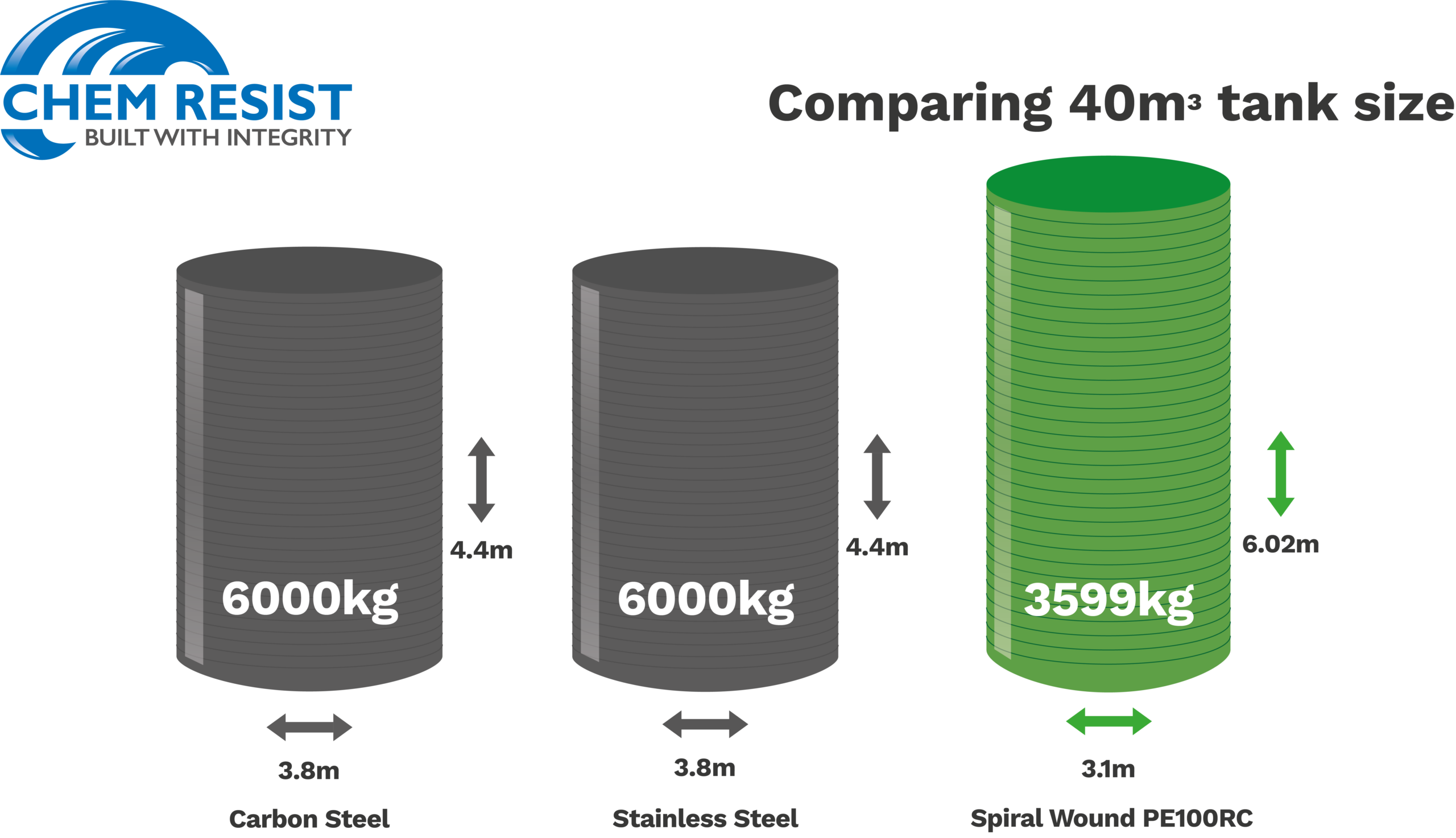
Space-saving solutions
Our manufacturing methods also allow you to be more economical with another precious commodity – space. Our Spiral Wound Thermoplastic Chemical Storage Tanks are made to your exact requirements; so we can manufacture to the precise height and diameter you need. This allows you to store the maximum capacity on the available on-site footprint.
The greatly reduced weight afforded by Spiral Wound Thermoplastic Chemical Storage Tanks, in comparison to steel also reduces the energy required to transport to your site, further reducing your carbon footprint.
A closer look at carbon footprint
Spiral Wound Thermoplastic Storage Tanks generate a lower carbon footprint when compared to other available comparable tank technologies including Steel and GRP (Glass Reinforced Plastic).
If you compare the combined energy needed to produce the raw material and manufacture a 40m3 Hydrochloric Acid tank, Spiral Wound Thermoplastic Tanks produce the lowest carbon footprint.
If you compare the same for a 40m3 tank for 96% Sulphuric Acid, Spiral Wound Thermoplastic Tanks produce the second-lowest carbon footprint. However, GRP Cold Cured tanks of this capacity would fall outside of standard BS:EN13121 requirements.
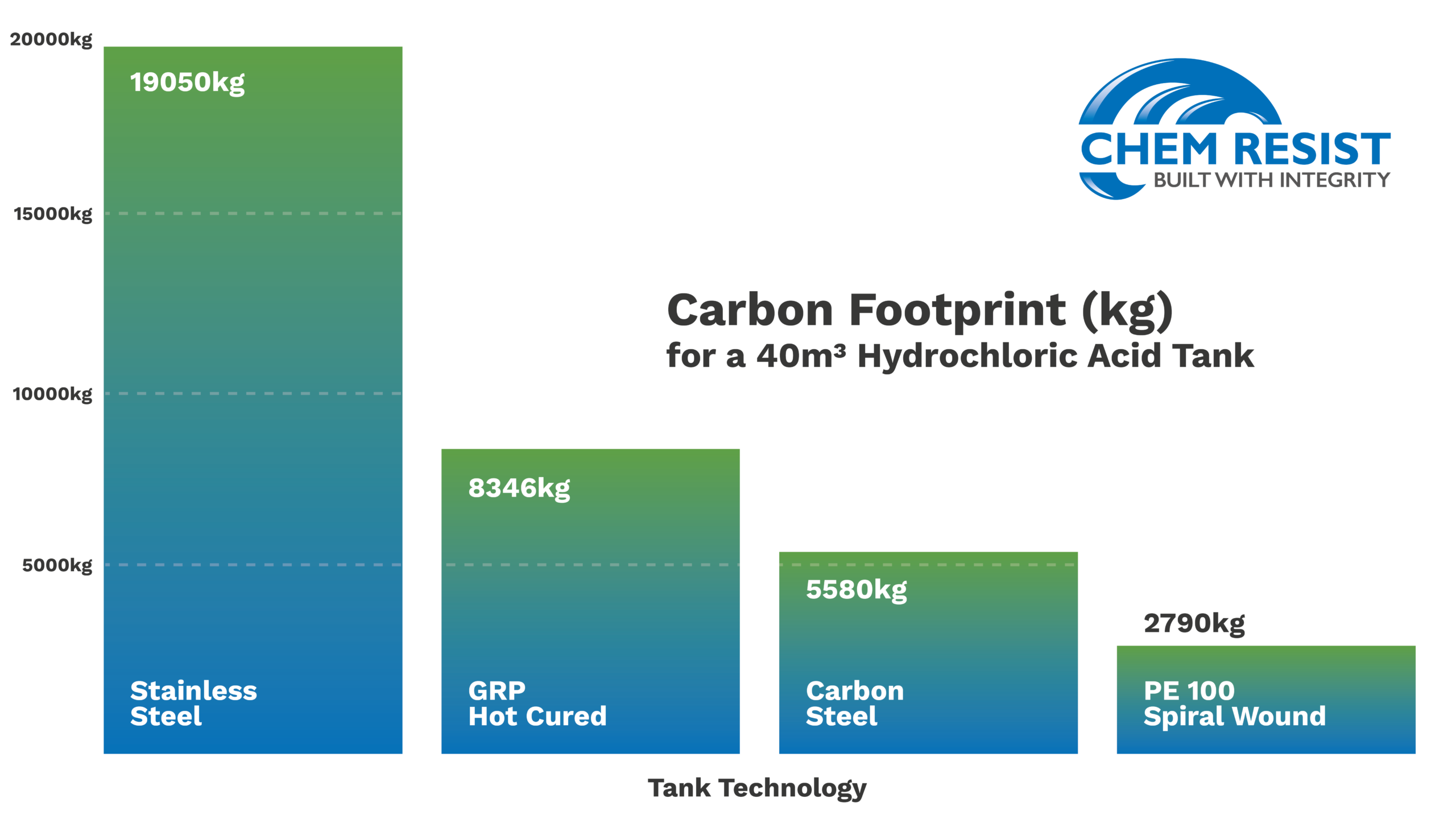
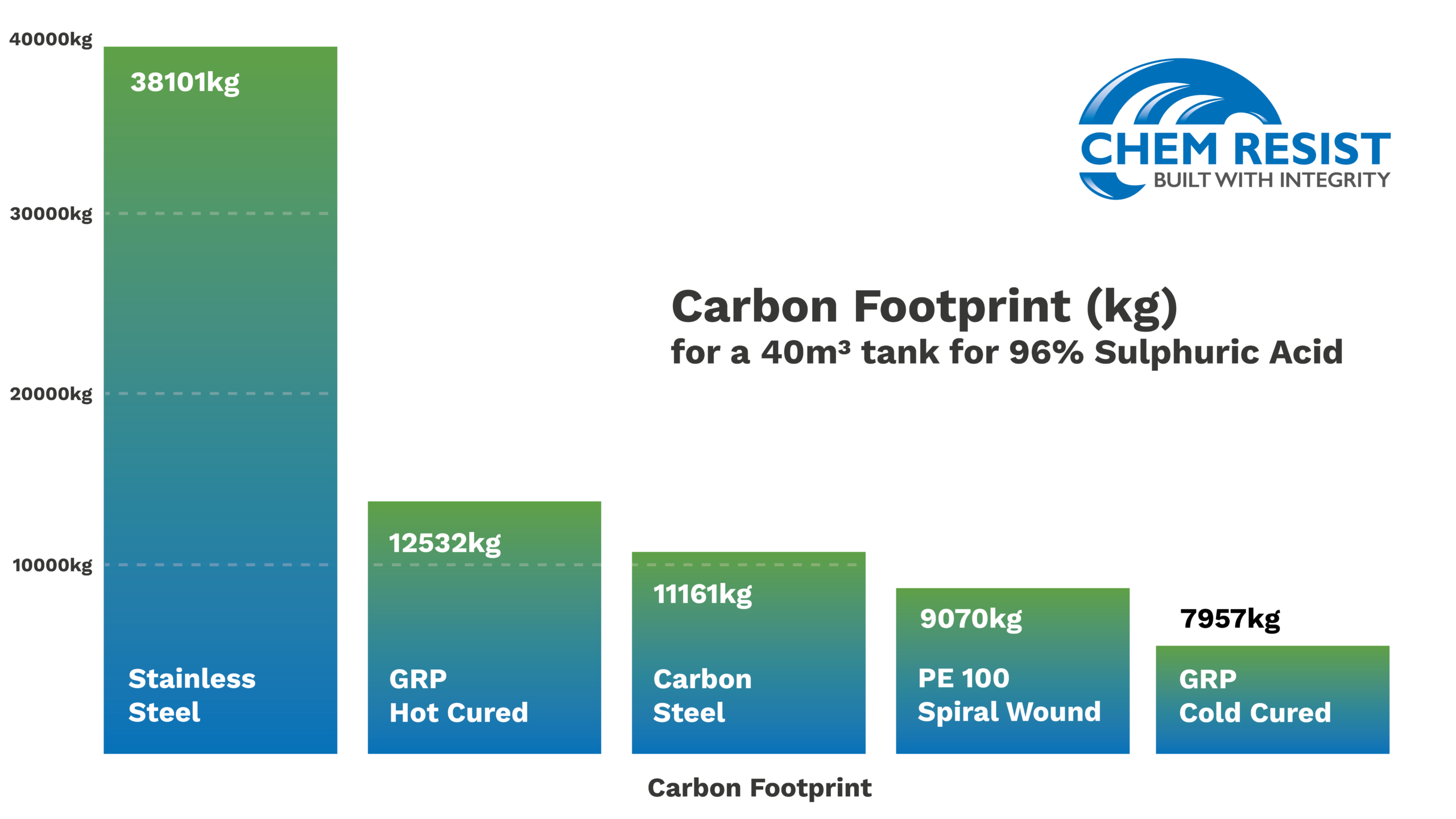
The business benefits of reducing your carbon footprint
There are many benefits to reducing your carbon footprint as a business; processes with lower carbon footprints are often more cost-effective in the long-term. Our Thermoplastic Chemical Storage Tanks, for example, are supplied with a 20 years design life as standard and with unlimited fill and empty cycles giving them a long and productive lifespan.
Laws are changing, and so too is corporate and public opinion. Making a conscious planned move towards taking the best environmental decisions before it becomes truly unavoidable allows more efficient planning and management. It can also bring a competitive edge; allowing businesses to stand out from the competition as the more ethical choice. Employees too, tend to report better workplace engagement when they know their company cares about important issues.
Who are Chem Resist?
We’re the UK’s leading manufacturer of Thermoplastic Chemical Storage Tanks, with extensive design and manufacturing capabilities.
With over 50 years of experience, we manufacture corrosion-resistant Thermoplastic Spiral Wound vertical, cylindrical, Chemical Storage, Mixing and Process tanks.
From our headquarters in West Yorkshire, we export our Spiral Wound Thermoplastic Chemical Storage Tanks all over the world, from Aberdeen to Australia.
Some of the Process Plant team (L to R): Tom Carroll, Simon Hewitt, Andy Townend, Joe Rhodes, Gary Smith, Henry Ward and Odelle Hewitt.
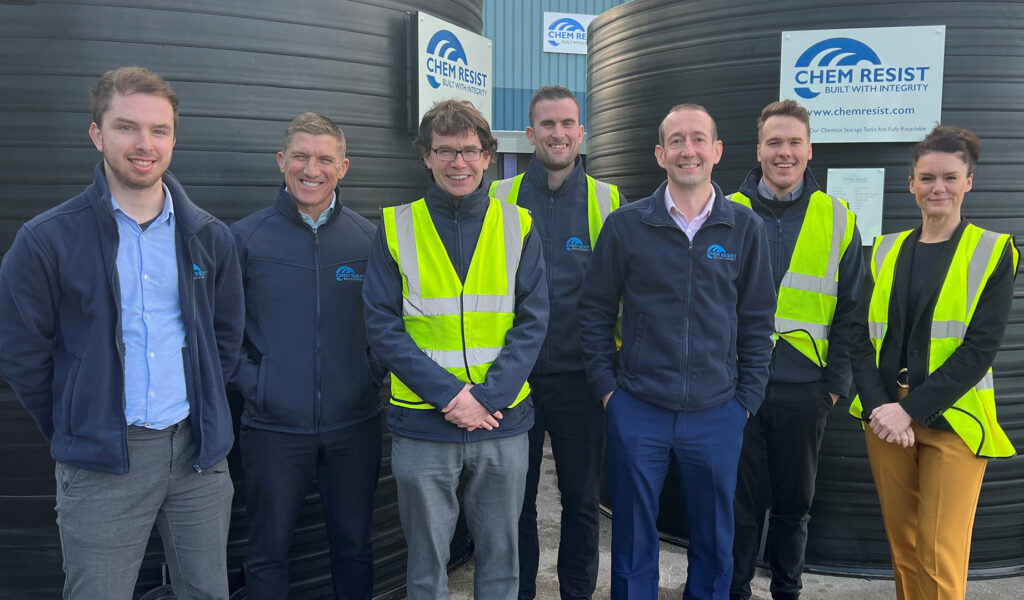
Prepared by Chem Resist Sales Director Gary Smith and Technical Manager Stephen Menzer, the white paper breaks down the business and environmental case for spiral wound manufacturing, complete with full technical data and calculations.

